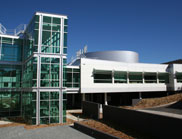Aug 16 2009
Constructed at the rear of CSIRO Entomology’s original research and administration building at Black Mountain, the new AU$14.7m high-tech building’s biocontainment laboratories can accommodate 56 research staff.

Designed to comply with the Office of the Gene Technology Regulator’s PC2 safety rating, the new laboratories will facilitate collaborative research with many of CSIRO Entomology’s key partners including; rural industry research corporations, universities, multi-national companies and other CSIRO divisions.
“These new laboratories will enhance CSIRO’s ability to help Australian industries move to the bioeconomy, an economy with the potential to reduce Australia’s reliance on traditional sources of energy,” Senator Carr said.
The bioeconomy refers to economic activity derived from the application of biotechnology based science and research to sectors such as health, energy, environment and agriculture.
“CSIRO Entomology is contributing to this transition through its expanding biotechnology research portfolio. This portfolio includes projects such as turning insect silks into new sources of biopolymers, new bio-based polymers and biocides, second-generation biofuels and bioremediation of contaminated water,” Senator Carr said.
CSIRO Chief Executive, Dr Megan Clark, said the new facilities replaced laboratories located in the Division’s original main building.
“The research facilities in CSIRO Entomology’s 1929, heritage-listed building were obviously not designed with today’s strict biocontainment requirements in mind,” Dr Clark said.
“Not only do the new laboratories provide CSIRO scientists and visiting colleagues with access to the best available equipment, but the new building has also been designed and built with ‘green’ considerations foremost in mind.”
Construction features include a highly insulated building envelope, clad with a recyclable material to internalise thermal mass and skylights to provide indirect natural lighting. Heating and cooling energy consumption issues are also addressed through the installation of; a 200,000 litre chilled water (thermal energy storage) tank, refrigerants with low or zero-ozone-depleting potential and a solar boosted gas-fired hot water plant.